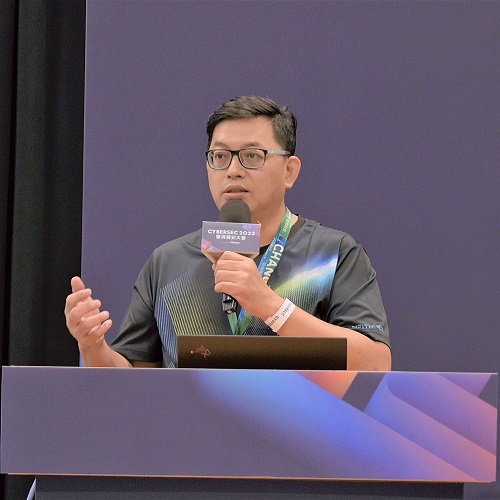
As digital transformation continues to impact daily life, traditional cybersecurity architecture is increasingly being replaced. Join others in in-depth discussions on the highly-discussed zero-trust architecture and explore new strategies for cybersecurity.

With the inherent limitations from evolution and various traps in the environment; human beings may become a breach of the Zero Trust Architecture (ZTA) for information security. We penetrate into human beings through two ZTA aspects, which are devices and data. Firstly; based on the principle of biological evolution, the fittest wins the truth; human sensing peripherals (i.e. vision, hearing, etc.) not only have limited ranges; but also produce unreal judgments such as illusions and blindsight. Secondly, cognitive neuroscience has discovered that human data storage (i.e. memory) also has weaknesses. In addition to forgetting, it is also possible to forge. Like an information system; all kinds of true and false information are constantly input from the environment; the brain must start to prevent penetration in the preprocessing stage. At the stage of data processing, the brain needs to integrate information from multiple sources; it can judge whether there is a fallacy in logic; and then make a decision. Although human beings have evolved into a system with weaknesses in information security, technologies such as AI are also gradually assisting human beings to manage their vulnerability and maintain the trustworthiness. In addition to introducing interdisciplinary knowledge such as brain science, this speech will also connect the brain and the ZTA with examples.
Zero Trust Architecture (ZTA) has become a popular keyword in cyber security, and the government has accelerated its adoption this year. Before rushing to implement it, we should understand how attackers view this architecture first. In this session, we will examine ZTA from the perspective of an attacker. What is trust? What is Zero Trust? What impact does ZTA have from the viewpoint and experience of a red team? When beginning to implement ZTA, what priority of mechanisms do we recommend?We hope that through this session, our audience can adjust their cybersecurity strategies correctly to address the security challenges of the Zero Trust era.
Following a ransomware attack, many companies find it challenging to detect and respond to the attack effectively. This session will explore various tools and methods that can be utilized to fully detect hackers' behavior, movements, and scope of penetration and show how companies can employ comprehensive security detection tools to thoroughly examine the cloud, network, and endpoints one-by-one, locate the paths of threat invasion and the scope of dissemination, and propose a new security architecture to ensure complete defense and prevent secondary ransomware attacks.
In this session, we will first introduce the concept of zero trust, starting from the basic concept of dynamic risk, and then understanding its security assumptions and derived security mechanisms. However, there is no silver bullet solution in the field of information security, and similarly, zero trust cannot solve all security issues. Therefore, we will introduce the scope of zero trust defense and clarify common misconceptions so that the audience can evaluate the correctness and maturity of their own zero trust mechanisms.
Next, we will delve into the implementation of the architecture and dynamic access policies. The zero trust architecture highly relies on its core engine, and if there are vulnerabilities in the core engine, it will lead to overall security issues. Finally, the design of dynamic access policies is one of the core methods of zero trust mechanisms, but it is rarely discussed. Therefore, we will share our research on dynamic access policies.

Navigator.Efficiency.Intelligent.Technology.Hope
NEITHNET is composed of a group of experts passionate in information security who specialize in advanced insights into hidden cyber threats and are highly familiar with the offensive and defensive language of the future world. On a daily basis, our world-class information security laboratory (NEITHCyber Security Lab) processes huge amounts of information from all sources; just when you feel like you’re searching for clues like a needle in a haystack, we ‘ve already discovered the threat way ahead of time. NEITHNET's service scope is centered on cyber threat intelligence and extends to MDR real-time monitoring, network traffic analysis , dns security, information security diagnostics, and various information security incident processing and forensic services, etc., helping customers guard against ubiquitous cyber threats.
CYBERSEC 2023 uses cookies to provide you with the best user experience possible. By continuing to use this site, you agree to the terms in our Privacy Policy .






